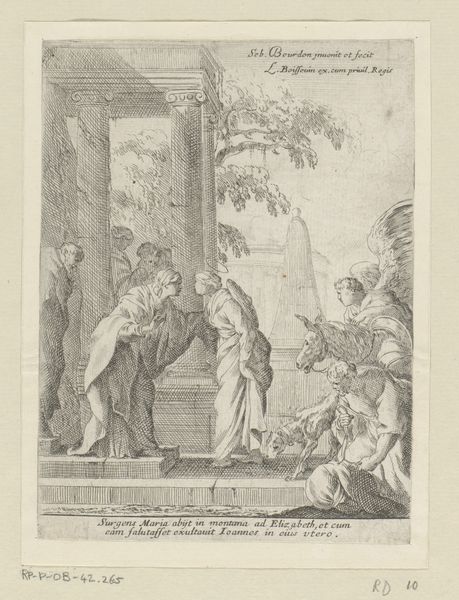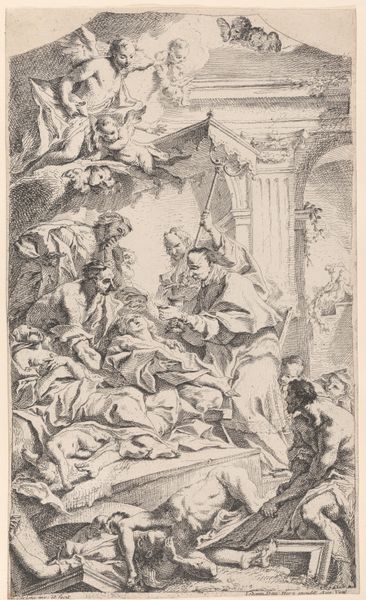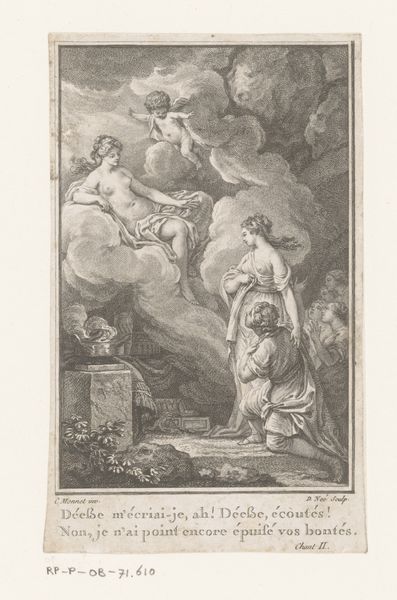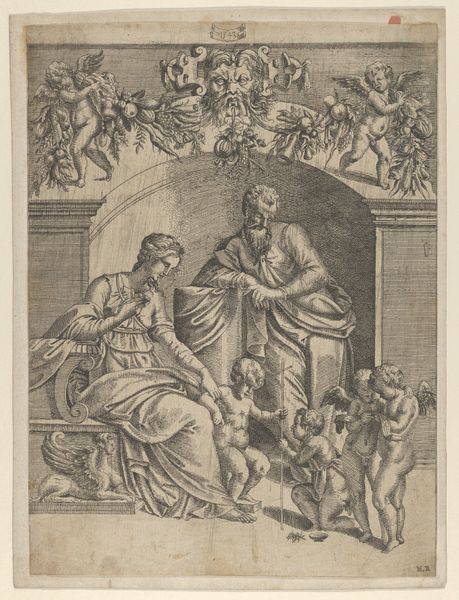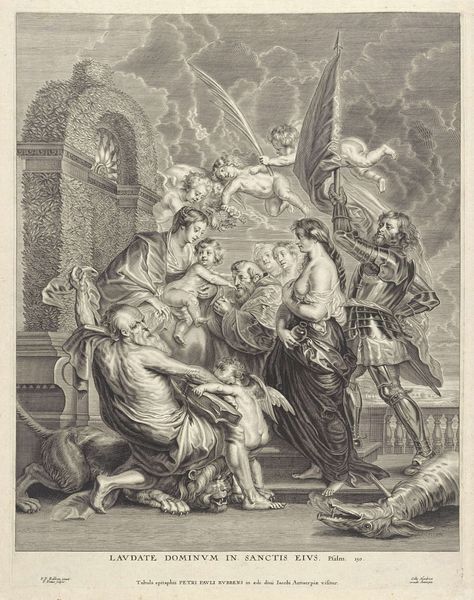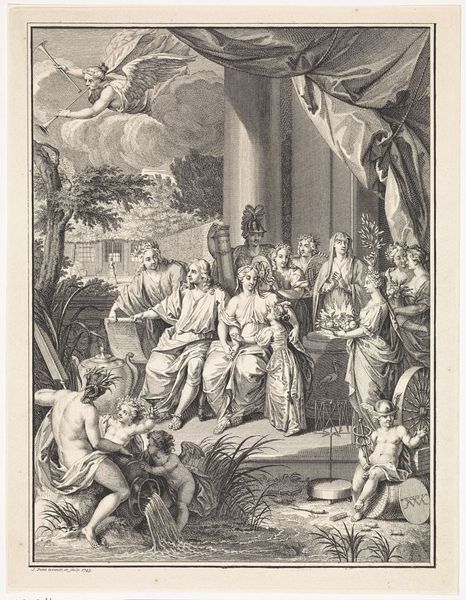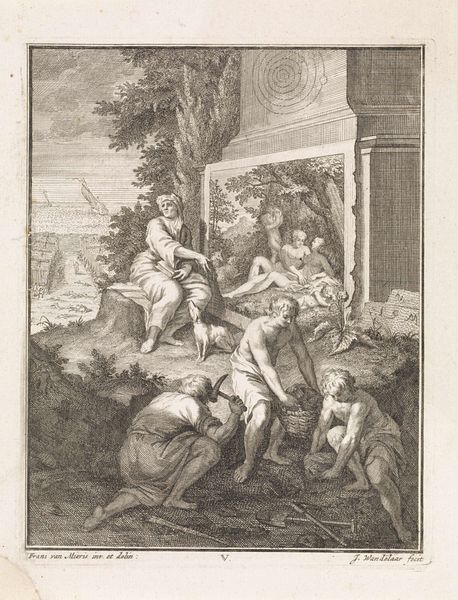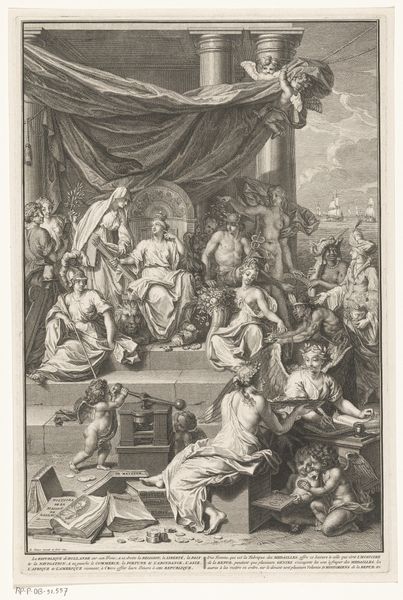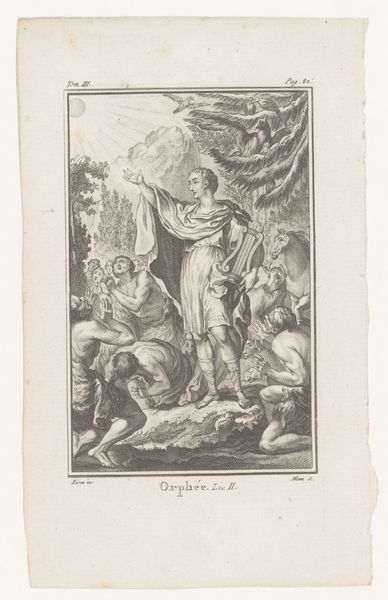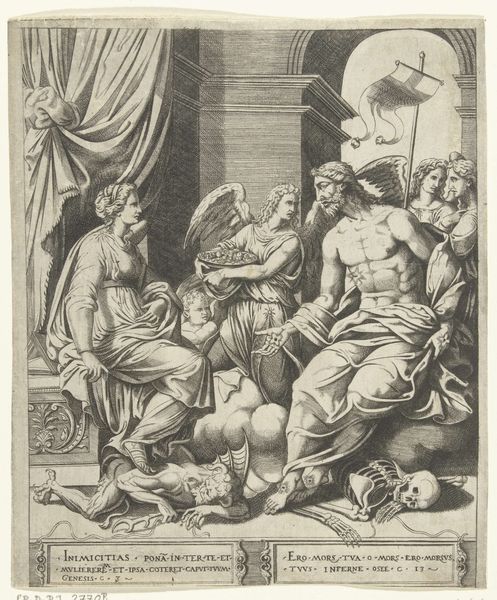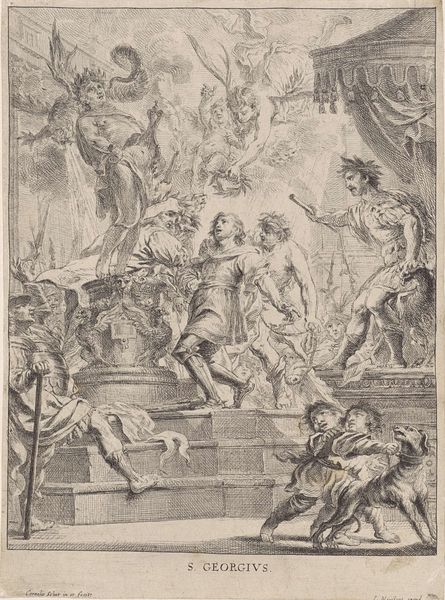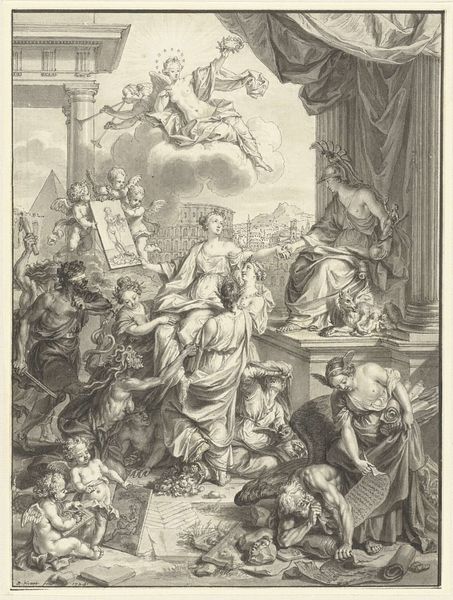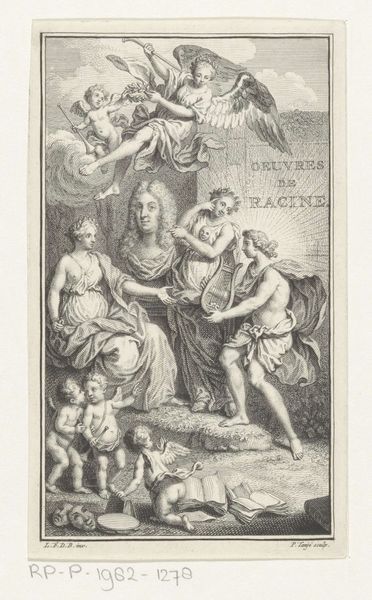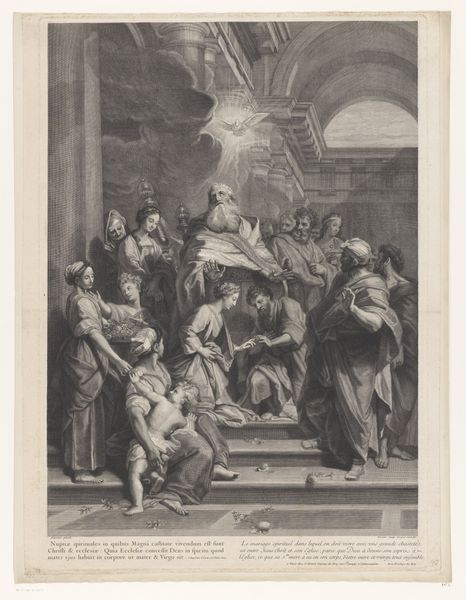
Man en vrouw voor een altaar door de liefde gekroond 1659 - 1711
0:00
0:00
print, engraving
#
allegory
#
baroque
# print
#
figuration
#
history-painting
#
engraving
Dimensions: height 200 mm, width 166 mm
Copyright: Rijks Museum: Open Domain
Augustinus Terwesten created this etching titled "Man en vrouw voor een altaar door de liefde gekroond" sometime in the late 17th to early 18th century. The composition is dominated by a central couple, poised before an altar, with an allegorical figure crowning them with love. The artist's use of line is intricate, creating a rich tapestry of light and shadow. Note how the dense cross-hatching gives volume to the figures and depth to the scene, while also creating texture and surface tension. The scene is organized around a clear semiotic structure. The altar, the crowning, and the surrounding cherubs all operate as signs of a culturally specific understanding of marriage and love. The print invites us to decode the underlying meanings, engaging with the historical codes of love and matrimony. The formal elements of the artwork, especially the intricate linework, serve not only to depict a scene, but to encode a world of cultural and philosophical meanings.
Comments
No comments
Be the first to comment and join the conversation on the ultimate creative platform.
